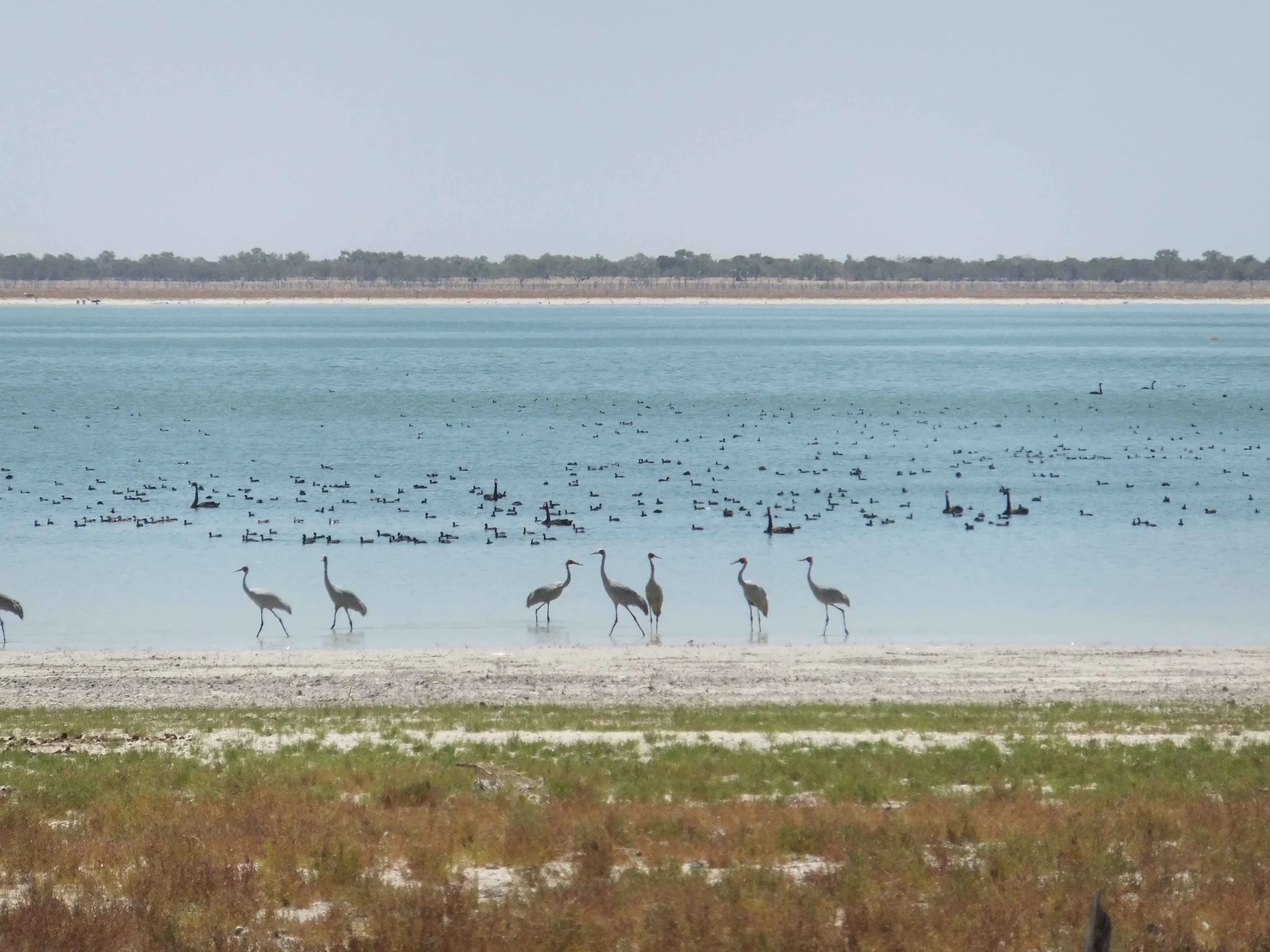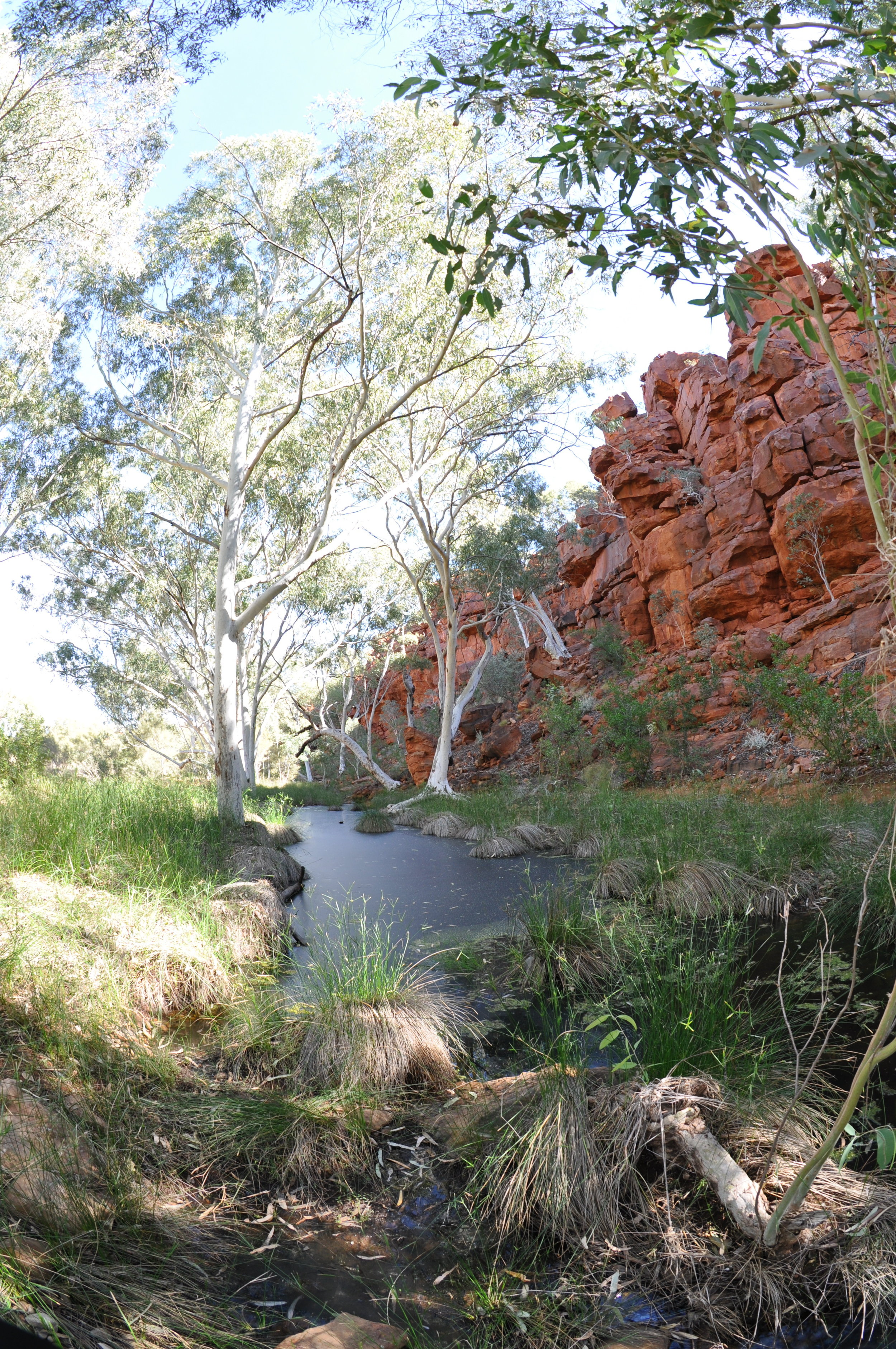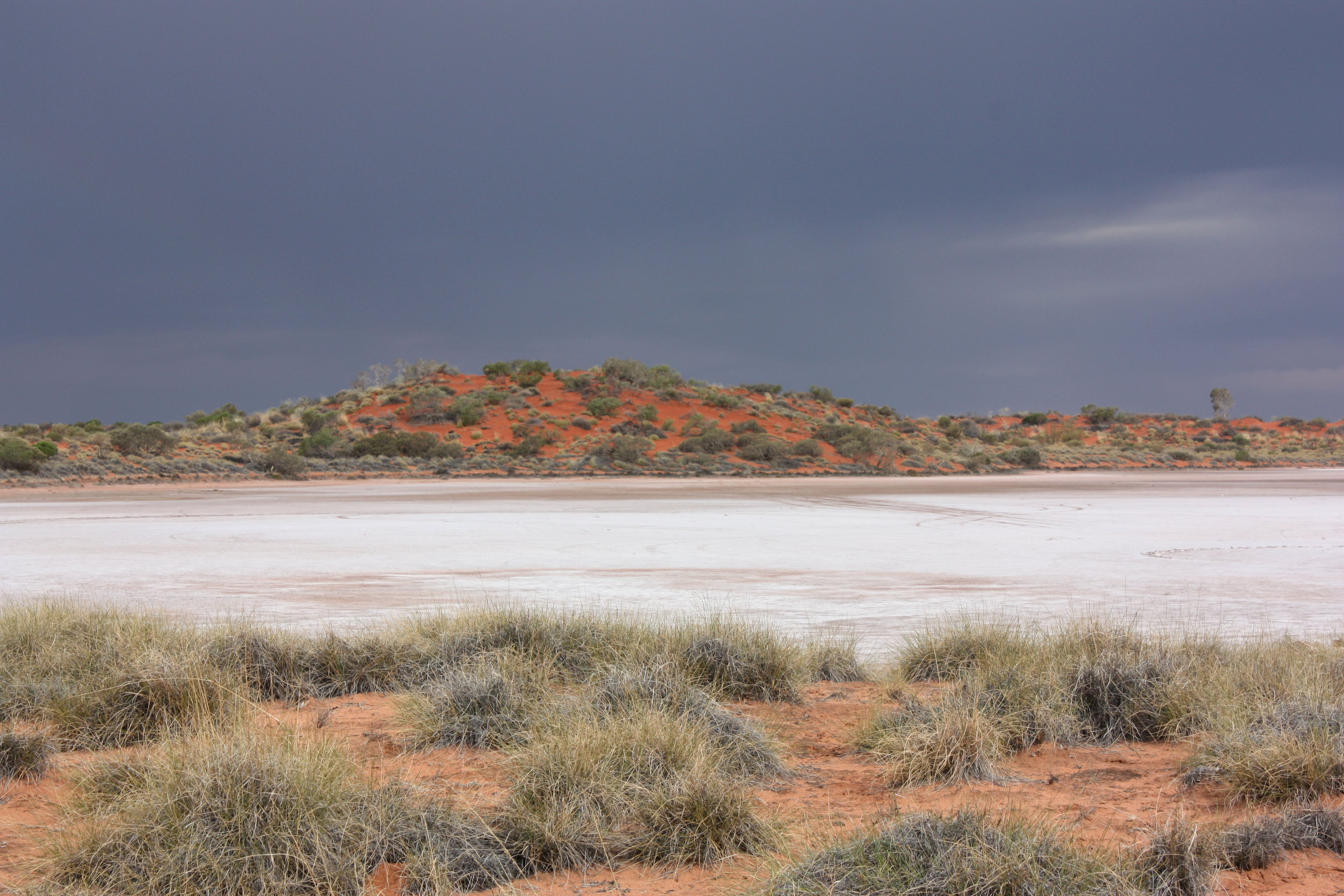Wetlands
The Canning Stock Route (CSR) targets sources of freshwater, developed into the 51 wells. The area traversed by the CSR naturally contains wet areas that provide refuge to plants and animals otherwise unable to survive in this arid environment.
Wetlands are areas of high productivity, with nutrient accumulation and surface and ground-water recharge, as well as providing natural and artificial water supply — the wells. The natural wetlands range from small soaks dug by hand, to permanent rock holes and pools in creek lines.
Other types of natural water sources encountered along the CSR include soaks, springs, claypans, salt lakes, creek and river systems. The following areas are recognised as nationally important wetlands due to their biogeographic representativeness and the provision of animal habitat during adverse conditions:
Windich Springs
Pools of the Durba Hills
Lake Disappointment (Savory Creek) system
Lake Dora (Rudall River) system
Rock pools of the Breadon Hills; and
Lake Gregory system.
Natural wetlands provide resting and breeding places for many species of waterbirds and contain high numbers of endemic species (those not found elsewhere). Wetlands are critically important in desert areas, not only for plants and animals reliant on occasional or permanent water, but also for the survival of desert people.





